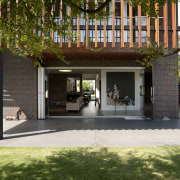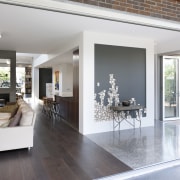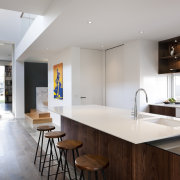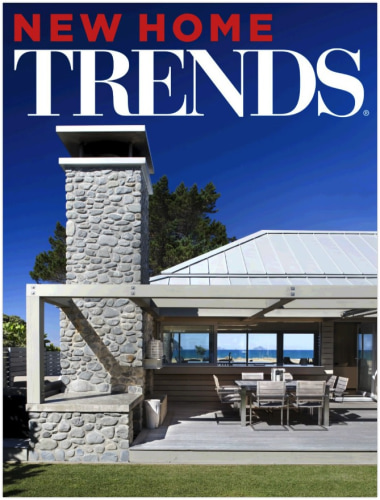All embracing architect Taras Wolf's house
Taras Wolf contemporary family home
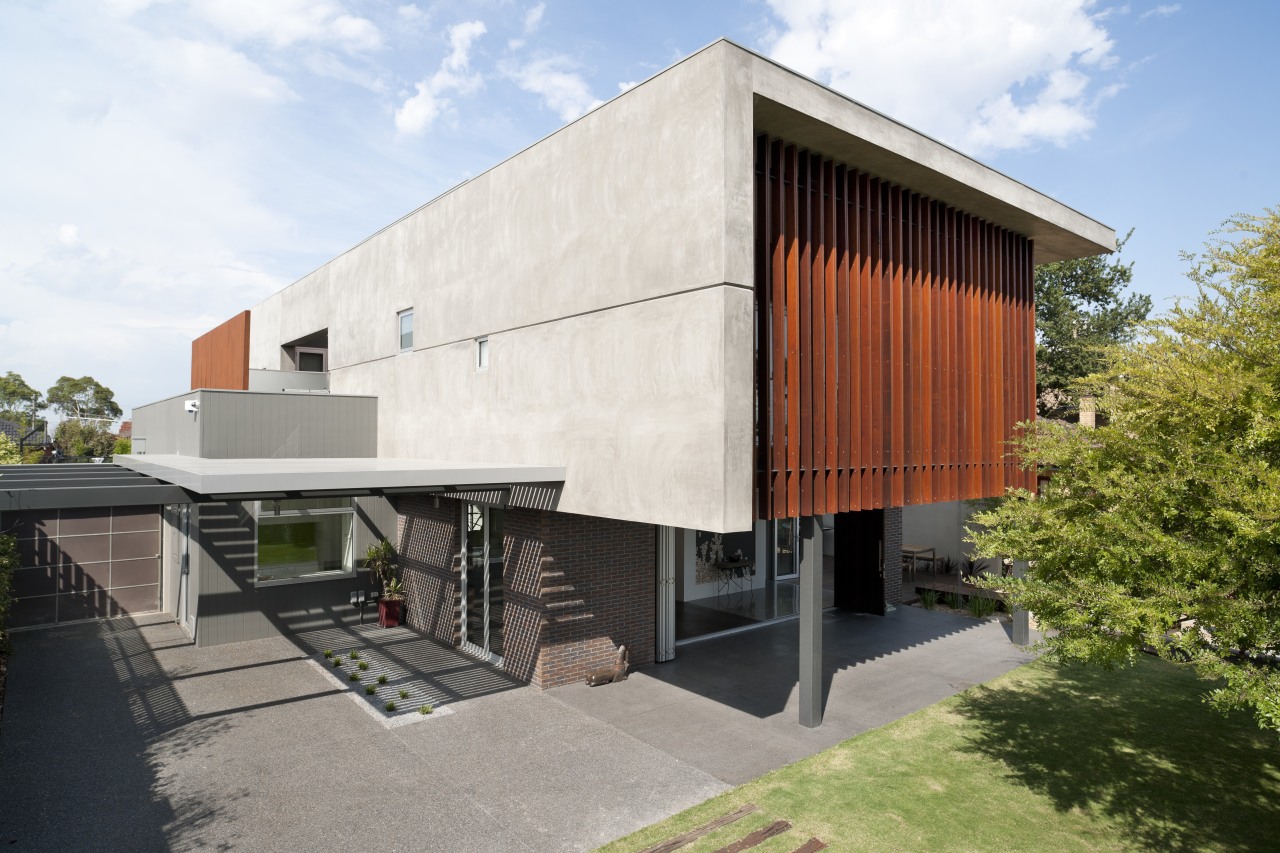
Architects designing their own homes are invariably the most demanding clients with good reason. An architect's house makes a strong design statement about an architectural practice, so there's little margin for error.
For Melbourne architect Taras Wolf of Wolf Architects, designing his own house was a 10-year project that began when he and his wife bought a 1940s house on a suburban site. Although originally planning to renovate, the couple decided a new house that incorporated elements of the old was the best way to meet their sustainability and lifestyle requirements.
Because Taras Wolf's architectural practice is based at the house, the design needed to meld living and office spaces. Wolf says the arrangement has a synergy that helped focus the design.
"The practice specialises in residential architecture, so it is appropriate we work out of a house," he says. "This project also gave us an opportunity to showcase what we do in essence, we conceived it as a display home."
Wolf says other ideas explored in the design were an East meets West theme that would reflect the family's Asian heritage; the idea of public versus private spaces; and the notion of a sense of playfulness the house needed to meet the needs of a family with young children.
Subtle references to the East meets West theme can be seen on the exterior. A large concrete-like shell wraps the top half of the house, enclosing a base of thin Roman bricks a material commonly seen in Asia. Merbau timber battens add a tropical look and provide a privacy screen at the front of the house. To prevent warping, the extra-long battens feature steel rods sandwiched between two strips of wood.
"Visually, the timber battens help to soften the concrete-like shell," says Wolf. "They are angled so people passing by on the road cannot see into the main suite on the top floor. A leafy elm tree in front of the house retains privacy from front on."
The architect also referenced Asian tradition with the landscaped entry, which is reminiscent of a Chinese garden.
Although the house exterior conveys a sense of a strong, dark shelter, on the inside the house is open and light filled.
"The rendered shell is like a hermit crab. It provides a psychological feeling of security," says Wolf. "It is also like a very long matchbox sleeve. But on the interior, it is as though the box has been hollowed out to let in the light."
Much of the natural light comes from a light well in the centre of the house.
"This void allows light to penetrate the deepest part of the house. Even the office on the south side gets sunlight," says the architect. "But the void also has other roles to play. Together with the staircase that winds up to the attic studio, it forms a vertical corridor, creating zones that separate public from private, and parents from children. Various views through this vertical corridor connect the family on the different levels. It also acts as a thermal chimney, removing the build-up of hot air from the house."
Large sliding doors around the house provide additional cross ventilation, so the air conditioning is rarely used, even on hot days. Wolf says the house is so open birds often fly right through. But although the interior spaces all flow seamlessly, areas can also be closed off as required.
"Altogether there are 10 split levels in the house. These are all intertwined providing a collection of numerous small spaces, rather than separate rooms."

Wolf has incorporated space within his office to display collected items, including one car from his prized collection of vintage Mercedes Benz vehicles.
"The Mercedes, which I have fully restored, can be seen as a metaphor for the entire house the attention to detail behind the scenes is immense. And it is this detail that makes everyday routines in the house that much more pleasant."
Another element impacting on the design is the materiality a change in colour tone, texture and density is evident as you move through the different spaces.
The ground level features hard, dark surfaces. The flooring, for example, is concrete and dark oak. On the upper floors, materials are lighter and softer, and include cork and carpet. The change in flooring is also a recognition of the Asian custom of removing shoes indoors.
For sustainability, local materials were chosen, and all materials are low maintenance with low-VOC finishes. Other key features include more than 50 products recycled from the original house. The original bedroom wing was also retained.
"All these elements come together in this house to create a very harmonious living environment," says Wolf.
Story by: Colleen Hawkes
Home kitchen bathroom commercial design
Classic looks, contemporary efficiency
Diving into nature
Personality plus

